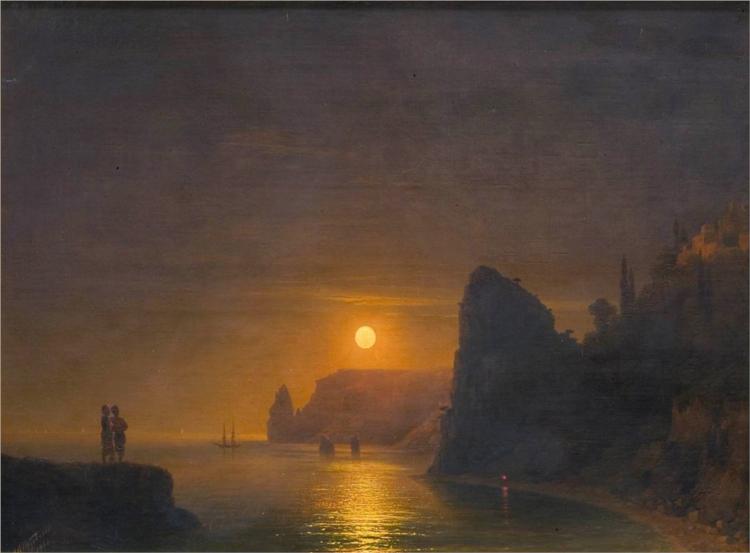Empathy begins the process of connecting us with others, as we share their emotions. Our own life experience enables us to understand something of the life experience of others. That emotional understanding is the distinction we call empathy: “. . . the capacity to share the feelings of others . . .” “Empathy is a complex capability enabling individuals to…
Read More
Value for Wednesday of Week 53 in the season of Harvest and Celebration
Interlude

An interlude is a brief rest, a time of calming or reflection. Take a breath: a new year is just around the corner.
Real
True Narratives
Technical and Analytical Readings
Photographs
Documentary and Educational Films
Imaginary
Fictional Narratives
Poetry
Music: Composers, artists, and major works
- Caprice and Elegy (1930) (approx. 8’) (list of recorded performances)
- A Song Before Sunrise (1918) (approx. 6’) (list of recorded performances)
- Idyll (1932) (approx. 24’) (list of recorded performances)
- Cynara (1907) (approx. 10’) (list of recorded performances)
- A Song of Summer (1930) (approx. 11’) (list of recorded performances)
Maurice Ravel, Valses nobles et sentimentales (Noble and Sentimental Waltzes) (1911) (approx. 14’) (list of recorded performances)
Wolfgang Amadeus Mozart, early and mid-life Divertimenti
- K. 136 in D Major (1772) (approx. 8’) (list of recorded performances)
- K. 137 in B Major (1772) (approx. 9’) (list of recorded performances)
- K. 138 in F Major (1772) (approx. 11-12’) (list of recorded performances)
- K. 205 in D Major (1773) (approx. 19-20’) (list of recorded performances)
- K. 251 in D Major (1776) (approx. 24-27’) (list of recorded performances)
- K. 287 in B-flat Major (1777) (approx. 42’) (list of recorded performances)
- K. 334 in D Major (No. 17) (1780) (approx. 36-47’) (list of recorded performances)
Guy Ropartz, piano music:
- Dans l’ombre de la montagne (1913) (approx. 34’)
- Un Prélude Dominical et Six Pièces à danser pour chaque jour de la semaine (1928-29) (approx. 28’)
Other works:
- Ludwig van Beethoven, Piano Sonata No. 19 in G minor, Op. 49/1 (1798) (approx. 16-17’) (list of recorded performances)
- Beethoven, Piano Sonata No. 20 in G major, Op. 49/2 (1798) (approx. 10-16’) (list of recorded performances)
- Lars-Erik Larsson, 12 Concertinos, Op. 45 (1953-1957) (approx. 13’)
- Franz Tunder, Organ works (approx. 91’)
- Arnold Bax, Summer Music (1921, rev. 1932) (approx. 9’) (list of recorded performances)
- Erik Satie, Trois gymnopédies (1888) (approx. 10’) (list of recorded performances) [“The word gymnopédies was derived from a festival of ancient Sparta at which young men danced and competed against each other unencumbered by clothing, and the name was a (presumably) droll reference to Satie’s gentle, dreamy, and far-from-strenuous piano exercises. (Satie is known to have introduced himself as a gymnopédiste.)”]
- Nick Peros, 24 Nocturnes for Solo Guitar (approx. 63’)
- César Franck, Grand Trio pour violin, violincelle et piano in C minor, CFF 108 (1834) (approx. 15-17’) (list of recorded performances)
- Gerald Finzi, Interlude, Op. 21 (1932-1936) (approx. 12-13’) (list of recorded performances)
Music: songs and other short pieces
- Franz Schubert (composer), Winterlied (Winter Song), D. 401 (1816) (lyrics)
Visual Arts
- René Magritte, Intermission (1927/28)
- Paul Klee, Tropical Twilight (1921)
- Claude Monet, Twilight, Venice (1908)
- Mikalojus Ciurlionas, Winter Motif (1907)
- Vincent van Gogh, Landscape at Dusk (1885)
- Vincent van Gogh, Village at Sunset (1884)
- Arkhip Kuindzhi, Moonlit Night on the Dnieper (1880)
- Ivan Shishkin, Twilight. After Sunset (1874)
- Konstantin Korovin, Winter Twilight
- Maxime Maufra, Evening Twilight on the Seine
- Frederic Edwin Church, Twilight in the Wilderness (1860)










